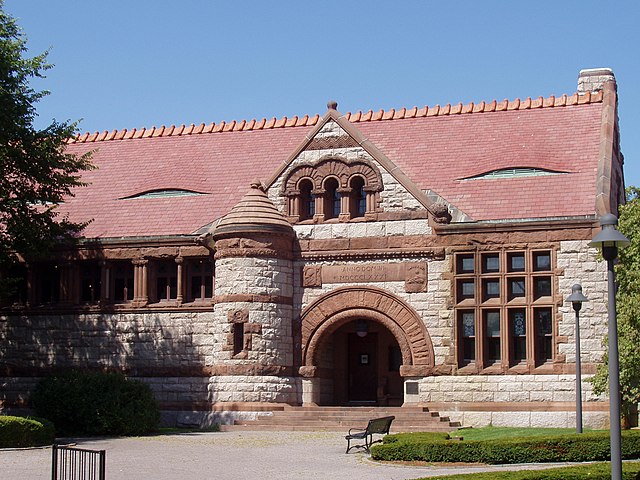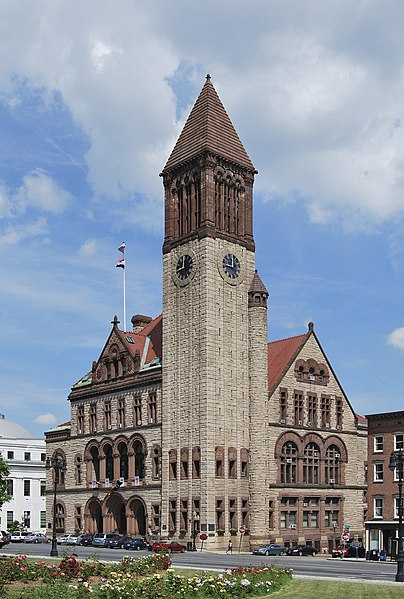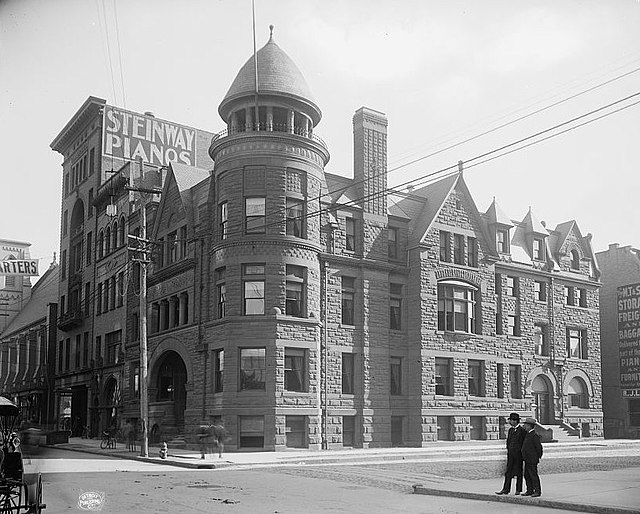Henry Hobson Richardson, FAIA was an American architect, best known for his work in a style that became known as Richardsonian Romanesque. Along with Louis Sullivan and Frank Lloyd Wright, Richardson is one of "the recognized trinity of American architecture".
Detail from portrait by Hubert von Herkomer
The Thomas Crane Public Library (Quincy, Massachusetts), with Japanese inspired eyelid dormers in the roof on each side of the entrance
The Old Colony station in North Easton, Massachusetts, illustrates Richardson's use of Japanese architectural concepts
Detail from Old Colony Railroad Station showing a dragon carved in the beam of a glazed Syrian arch
Richardsonian Romanesque is a style of Romanesque Revival architecture named after the American architect Henry Hobson Richardson (1838–1886). The revival style incorporates 11th and 12th century southern French, Spanish, and Italian Romanesque characteristics. Richardson first used elements of the style in his Richardson Olmsted Complex in Buffalo, New York, designed in 1870. Multiple architects followed in this style in the late 19th century; Richardsonian Romanesque later influenced modern styles of architecture as well.
Albany City Hall in Albany, New York, designed by Richardson in 1880
The Samuel Cupples House in St. Louis, built in 1890, is an example of a Richardsonian Romanaesque-style mansion
The original building for the Toledo Club in Toledo, Ohio, 1900s
Trinity Church in Boston, designed by Richardson in 1872








